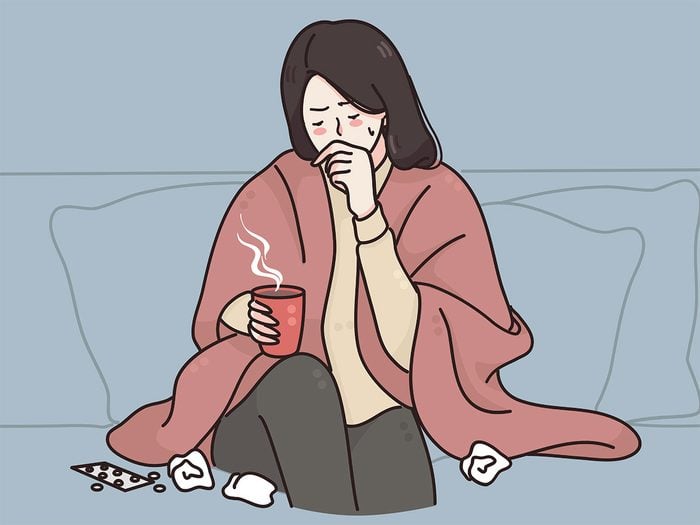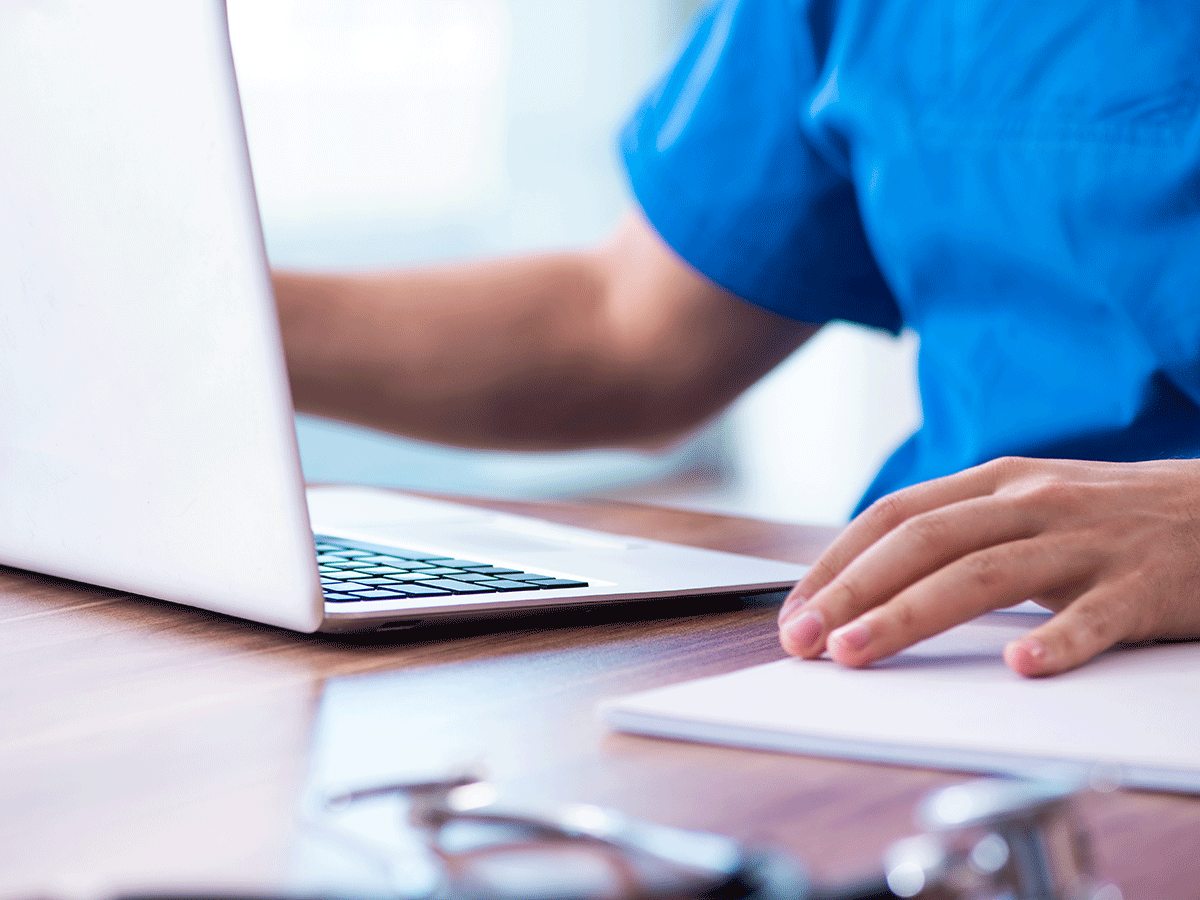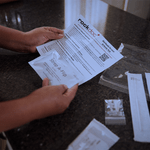What Is Rebound COVID, and Does Paxlovid Play a Role?

We asked infectious diseases physician Michael Gardam, who’s the medical director of infection control at Women’s College Hospital in Toronto and the CEO of Health PEI, to help explain what rebound COVID is, who should take Paxlovid while they’re sick, and how Paxlovid works.
Anecdotally, I suddenly know three people who’ve recently had rebound COVID after taking Paxlovid—the antiviral medication used to lessen symptoms and reduce the chances of getting long COVID, if you’re high-risk. Is it just that this terminology—“rebound COVID”— has caught on and people are sharing about it more, or are more people experiencing rebound infections because more people know about—and are taking—Paxlovid?
It’s interesting: The original studies that were done with Paxlovid found that a rebound [infection] after you finished your treatment was rare. And then as the world started using Paxlovid, you’re measuring tens of millions of people instead of the thousands of people in a trial. So when you have such a high volume of people, you start to get a much more accurate signal. And it became pretty clear that rebound infections were more common than what was identified in the original trials.
Have you seen a lot of these rebound COVID infections?
My experience is in infection prevention and control, so I’ve been very busy the last three years with the pandemic. But I’ve also had rebound COVID myself—in my own case, I was fairly sick with COVID. I took Paxlovid and I felt better within 12 hours. I found it quite remarkable how well it worked—my symptoms were almost gone. And then 48 hours later, almost to the minute, my sore throat came back, I started feeling miserable and I basically went through COVID 2.0 all over again.
And because of what I do for a living I was quite fascinated by my symptoms. When they came back, I was like, Wow, I’m actually having rebound—this is quite bizarre. I’ve never experienced this before.
So it’s likely it was the same infection, it was just suppressed by the Paxlovid medications temporarily?
That’s correct. Is it possible that you could have been reinfected? Sure. Is it likely? Probably not. Because what are the odds of you getting reinfected 48 hours after stopping Paxlovid?
Can you describe the normal course of treatment with Paxlovid? Is it like taking antibiotics?
It’s three pills at a time, twice a day—in the morning and at night—for five days. It’s actually two medications in the blister pack: you get one oral tablet of one medication [ritonavir] and two tablets of the other medication [nirmatrelvir]. You also have to start taking it within the first few days of COVID symptoms. With anti-viral drugs, the earlier you start it, the better. It’s very similar to drugs we give for chickenpox or influenza, like Tamiflu.
So why are rebound infections happening to so many people with COVID this fall and winter?
One of the thoughts behind it is that maybe the duration of the Paxlovid treatment isn’t long enough. Maybe it’s long enough for the majority of people—you take it for the prescribed amount of time, and it gets rid of the virus and off you go. But for some people, for whatever reason, the virus is lingering. And when you stop taking Paxlovid, it just comes back—a recurrence of the same virus. It’s just that it wasn’t completely dampened down. We do see that with many other viruses—that you can treat people with a prescribed course and not everybody will be cured by the end of that course. It might bounce back again.
Is there any indication of who will get rebound COVID, and who won’t?
No, I don’t know that we know who those people are, or that we can determine upfront who needs Paxlovid for longer. For most people, the prescribed duration is fine. Maybe there’s a subset that need it for several more days. We often prolong antiviral treatments for people who are immune-compromised, because we know they don’t clear the virus as well. But I’m not immune-compromised—so why did I have rebound COVID? I don’t think we’re necessarily able to predict that yet.
When you use the term “cured,” do you mean no longer experiencing symptoms and feeling better, or do you mean testing negative for COVID on a home test?
Because of the way we test for COVID, you’re testing for viral material, and you can test positive for weeks. We see that with lots of other diseases as well. My main area of clinical work historically has been tuberculosis, and I can treat you for your TB, and your TB could be gone, and you’re feeling fine, but you can test positive for tuberculosis genetic material for over a year. It’s there, but it’s not doing anything—so we see that a lot with COVID, too.
So if you take Paxlovid and start feeling better, how long should you wait before going back out into the world—to work, or school, or the grocery store? If you want to be a good, respectful citizen before rejoining society, do you need a negative home test? I think people don’t know what the rules are anymore, and some companies have changed their sick-day policies.
It used to be that across the country, different public health units told you how many days to stay home, and there was an actual order. And if you didn’t follow that order, you could get into trouble. Now, you’re basically left to your own devices. And the general rule of thumb is that you have to feel a lot better: You have to feel pretty much back to normal, with the exception that you can continue to have a cough (because that cough can last a long time).
For example, when I had COVID, I had a really bad sore throat, and I had aches and pains all over the place. Bad fatigue, headache and cough. If all of those go away except the cough, chances are the virus is gone and you’re not contagious anymore. So that’s sort of the rule of thumb that we use. I did continue to have a catch in my throat—that’s likely some lingering inflammation, more than anything else.
Do some people who take Paxlovid, and then get rebound COVID, wish they hadn’t taken it at all?
Maybe, but if you hadn’t taken it, you likely would have been sicker for longer during your first bout, and there wouldn’t have been a reprieve. Taken in the right timeframe, Paxlovid does work. And remember that most people do not get the rebound infection.
Do we know how many people do, percentage-wise?
In the original Paxlovid studies, if I remember correctly, they said rebound was in about 2 percent of people, but it’s clearly many-fold higher than that. It’s certainly not the majority, but it’s definitely higher than the original reports.
At this point, it’s all going to be self-reporting. There’s no requirement to report whether you had Covid or rebound Covid or not. So unless you’re in a study, it’s going to be hard to get an exact measure. But thinking of the people that I work with, I know of a few people who had rebound when they were on Paxlovid, which tells me it can’t just be 2 percent. What are the odds of that?
If you get rebound COVID, can you go back on Paxlovid again?
If you’ve gone through your package of Paxlovid, and you’re feeling okay, and then your symptoms come back, but you’re not in danger of going into the hospital, you can talk to your doctor about taking it again, possibly. But remember that ultimately, the societal benefit of Paxlovid is to prevent people from needing hospitalization. Now, let’s say you were a lung transplant patient and you took Paxlovid and got better, but then your symptoms came back again. If I were your doctor, I would be inclined to give it to you again, but that’s a very unique circumstance.
Can you tell me a bit about what qualifies someone for a Paxlovid prescription? Does it vary by province in Canada?
It does vary by province, and it’s one of the confusing things. The national guidelines came out, but each province can do its own thing, even including who can prescribe it. Where I currently live, in Prince Edward Island, a pharmacist can prescribe it for you. But that doesn’t happen in Nova Scotia. It highlights how when we talk about the Canadian healthcare system, we don’t actually have a healthcare system. We have 13 different healthcare systems.
Really, Paxlovid is for the people who are higher risk: those who have underlying lung conditions, people who are older, people who are immunocompromised. Where you might see a difference is that age cut-offs may differ between provinces. And remember the clock is ticking: If you wait too long, there’s no point in taking it.
What about the side effects of Paxlovid? I’ve heard people talk about experiencing a metallic taste in their mouths.
Oh yeah, that’s very real. It’s really the only significant side effect: a constant bitter metallic taste, and it actually gets more pronounced as you take it. By the fifth day, it’s pretty gross, but it’s not the end of the world. Otherwise, Paxlovid is actually quite a benign medication—the big thing is the drug interactions with any other medications you’re taking, so that’s why you’d want to consult with your doctor or your pharmacist first.
This interview has been condensed and edited.
Next: The Best Over-the-Counter Remedies for Cold and Flu Symptoms




